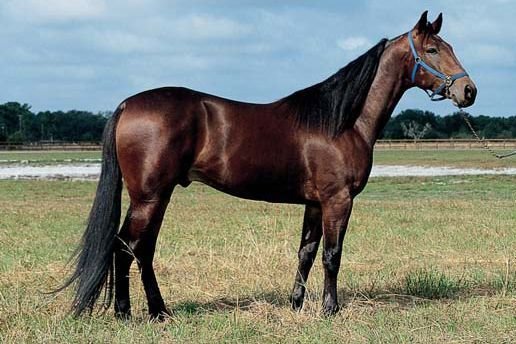American Standardbred Horse
American standardbreds are best known as harness racing horses, but they make a great all-around horse.
Standardbreds get little attention when compared to flashier breeds like thoroughbreds, Arabians or Friesians. There aren't many horse stories featuring standardbreds as the ideal dream horse. But standardbreds possess many qualities desirable in work and pleasure horses - a good temperament, athletic ability and intelligence.
This breed is called the Standardbred because they are bred to trot or pace one mile under a certain time limit of 2.30 minutes for trotting and 2.25 for pacing. Set up in 1879, this time limit is considered very generous by modern harness racing trainers. The current world record for pacing the mile is 1.46 1/5, set by Cambest in a time trail in 1993.
Gaits
Although harness races are only held at the trot and the pace, standardbreds do all of the standard gaits including cantering and galloping. Some standardbreds naturally pace, while some will pace in their pastures after months of training. Usually, pacers need to wear hobbles or other devices to keep them from doing anything other than pacing. A pace is where the legs on the same side of the body move at the same time. In a trot, the legs move differently - left hind with right foreleg and right hind with the left foreleg.
Standardbreds have been taught to speed rack and amble. Racking is a very rapid gait where all four hooves hit the ground separately. The forelegs come up higher than in other gaits. The head is held up high. This is a gait that is very smooth on the rider.

General Conformation
Standardbreds grow up to 17 hands in height, but average 15 to 16 hands. They can weigh anywhere from 800 to 1200 pounds. They have long bodies with deep chests and a long neck. Their shoulders are long and sloping, although some with more upright shoulders appear. Their manes and tails are often thicker and fuller than a thoroughbred's. The tails are carried low on well-rounded hindquarters. Their hindquarters are often higher than their shoulders.
Their heads are considered "plain" with ears often seeming to be too long for the head. The profile can be straight, Roman-nosed or even (rarely) a rams-head. Sometimes their eyes may appear to be too small for their heads. Their nostrils are wide to help scoop up air as they race.
Colors
Standarbreds are predominately bay with minimal white markings. Shades of bay seen include red or blood bay; bright bay; dark bay or almost black. Other solid colors seen are chestnut, grey, black, dun and roan. Chestnuts may have some black locks of black in their manes and tails but predominately they will be various shades of brown. The rarest solid color is dominant white. Currently, only one dominant white Standardbred lives in North America.
Standardbreds with sabino and tobiano pinto patterns have appeared in Australia and New Zealand. They are sometimes referred to as "colored" standardbreds.
References
"International Encyclopedia of Horse Breeds." Bonnie Hendricks. University of Oklahoma Press.
"Storey's Illustrated Guide to 96 Horse Breeds of North America." Judith Dutson. Storey Publishing.
United States Trotting Association. "Standardbred Breed Information"